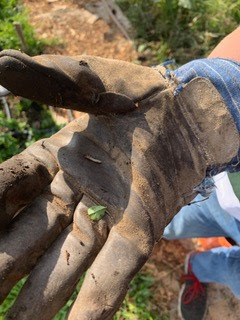This week, 6th period Sustag had the opportunity to show a group of kids from Del Mar middle school around the farm. The kids were from all grades and were in a class that focused on the environment. The kids were split up into groups of 3-4 and then they were paired with a one bed group. Each group showed the kids around the farm. Talking about their farm jobs, what they had grown, and about having the chickens. My group was the compost crew and we showed two 8th graders and one seventh grader how to create the compost piles by the hoop house. My group members also showed the kids the tool shed and told them about what tools are important for certain things. The reason that this class from Del Mar came to Redwood was because they have hopes of building a farm at their school. Hopefully they were able to gain some understanding on how to maintain a sustainable farm.
-Jay Mcconnell









